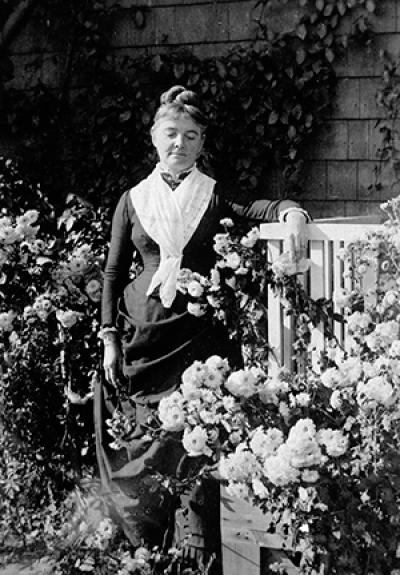The Genius of Mary Nimmo Moran

The Moran Studio, the East Hampton home of the artist couple Thomas Moran and Mary Nimmo Moran and their extended artistic family, will open after an extensive restoration this summer, and events marking the occasion are already underway.
On April 21, attention turns to Mary Nimmo Moran, when Shannon Vittoria, an art historian at the Metropolitan Museum of Art, will give a talk titled “Nature and Nostalgia in the Art of Mary Nimmo Moran (1842-1899)” at Clinton Academy. The talk is sponsored by the Ladies Village Improvement Society.
Ms. Vittoria, who wrote her doctoral dissertation on Nimmo Moran, will offer an overview of her life and career, starting with the emigration of her family from Strathearn, Scotland, not far from where her husband’s family had lived, in Bolton, England. The breadwinners in both families were handloom weavers who had lost their work because of the Industrial Revolution. And both emigrated to Philadelphia, his family in 1844 and hers in 1852.
Nimmo Moran’s mother had died in Scotland and she came to this country at the age of 10 with her brother and father. Moran was 7 when he, his mother, and his six siblings followed his father to Philadelphia, then the center of the United States’ textile industry. Moran went to grammar school and Nimmo Moran was schooled at home.
The couple met in 1857, but did not marry until 1863, at which point she began learning the artistic techniques he had mastered. Both artists were essentially self-taught.
There is little question of Moran’s having signed his name to paintings or etchings actually made by his wife, but Ms. Vittoria thinks that Nimmo Moran’s assistance in her husband’s work was more extensive than is thought.
Moran’s first success came with illustrations from sketches he made in the American West after being hired to go on various expeditions. From those came commercial work that became a family endeavor for the couple. Moran’s painting of Yellowstone made from sketches done on one of his expeditions is widely considered to be instrumental in Congress’s decision to establish the Yellowstone National Park, America’s first national park.
Nimmo Moran, who had started as a landscape painter and ended up being an influential and experimental etcher in the heyday of etching from 1879 to 1889, turned back to painting once the etching revival had subsided, and worked in both oil and watercolor. But it was as an etcher that her career took off. Because she could work quickly, she could sketch outside and print at home, one of the reasons many women did etchings.
And, as she was not constrained by rules and was technically adept, Nimmo Moran had the flexibility to be creative. Ms. Vittoria will also talk about Nimmo Moran’s and Moran’s aesthetic. They worked on their etchings together, but because etching is like drawing, Ms. Vittoria said, you can see the hand in the work. What was important to Nimmo Moran, Ms. Vittoria said, “were small, intimate corners of nature, being in and surrounded by nature.” Her husband’s “aesthetic was the more dramatic and sublime; hers was the more picturesque.”
Nimmo Moran’s premature death in 1899 at age 47 was a huge blow to her husband as well as to East Hampton residents. She died after nursing her daughter Ruth, who had volunteered as a nurse at Camp Wikoff in Montauk, helping the soldiers recovering there from the various tropical diseases they had caught in Cuba fighting the Spanish-American War.
Moran left East Hampton two weeks later, moved his studio in Manhattan to Irving Place, and traveled abroad for 17 years, still spending summers in East Hampton, before settling for the rest of his life in Santa Barbara, Calif.
As a perk, audience members with a place reserved in advance through the Ladies Village Improvement Society at 631-324-1220 or by email to [email protected] can, weather permitting, expect a tour of the Moran house and studio, a short walk south on Main Street from Clinton Academy.
